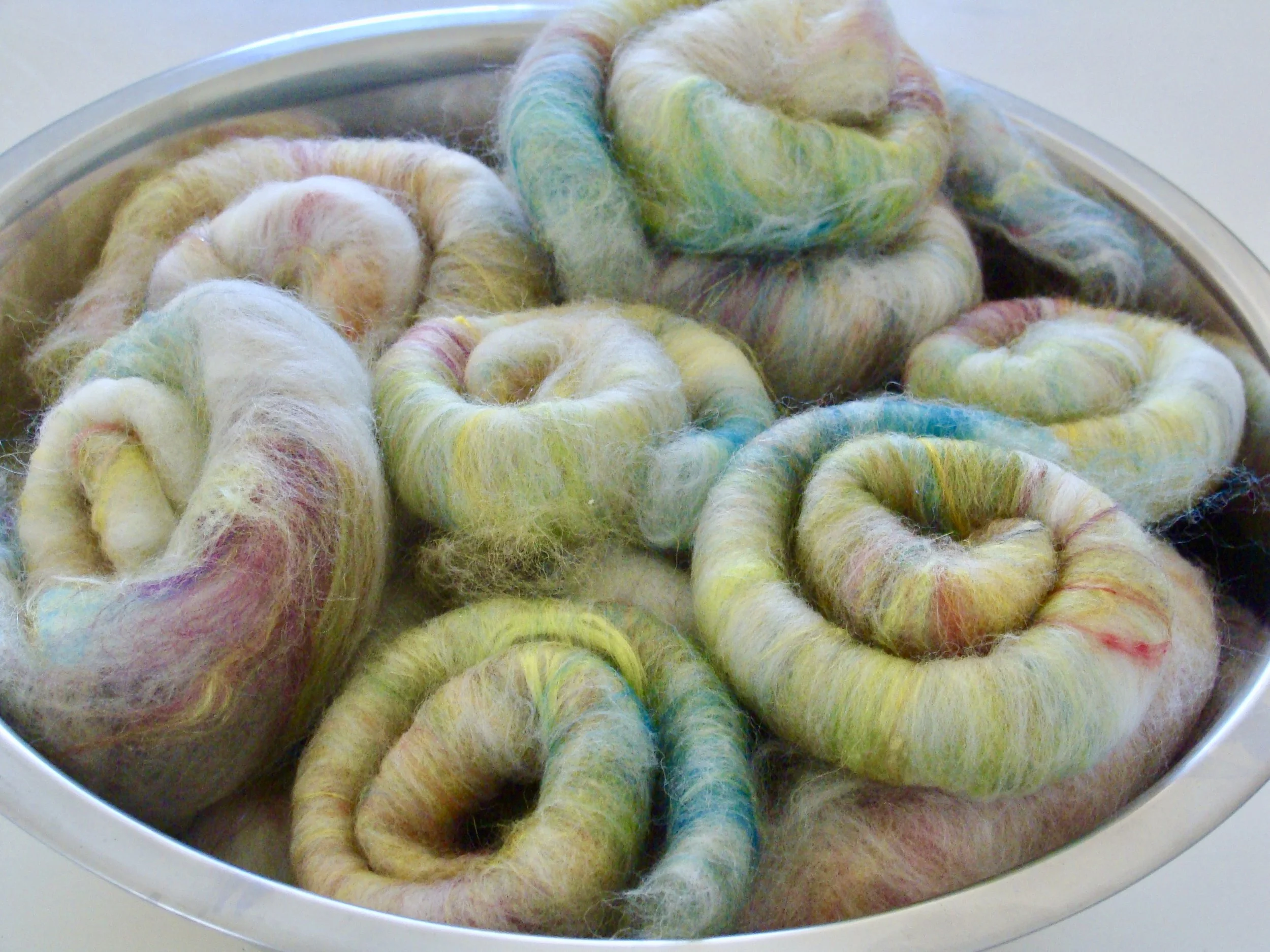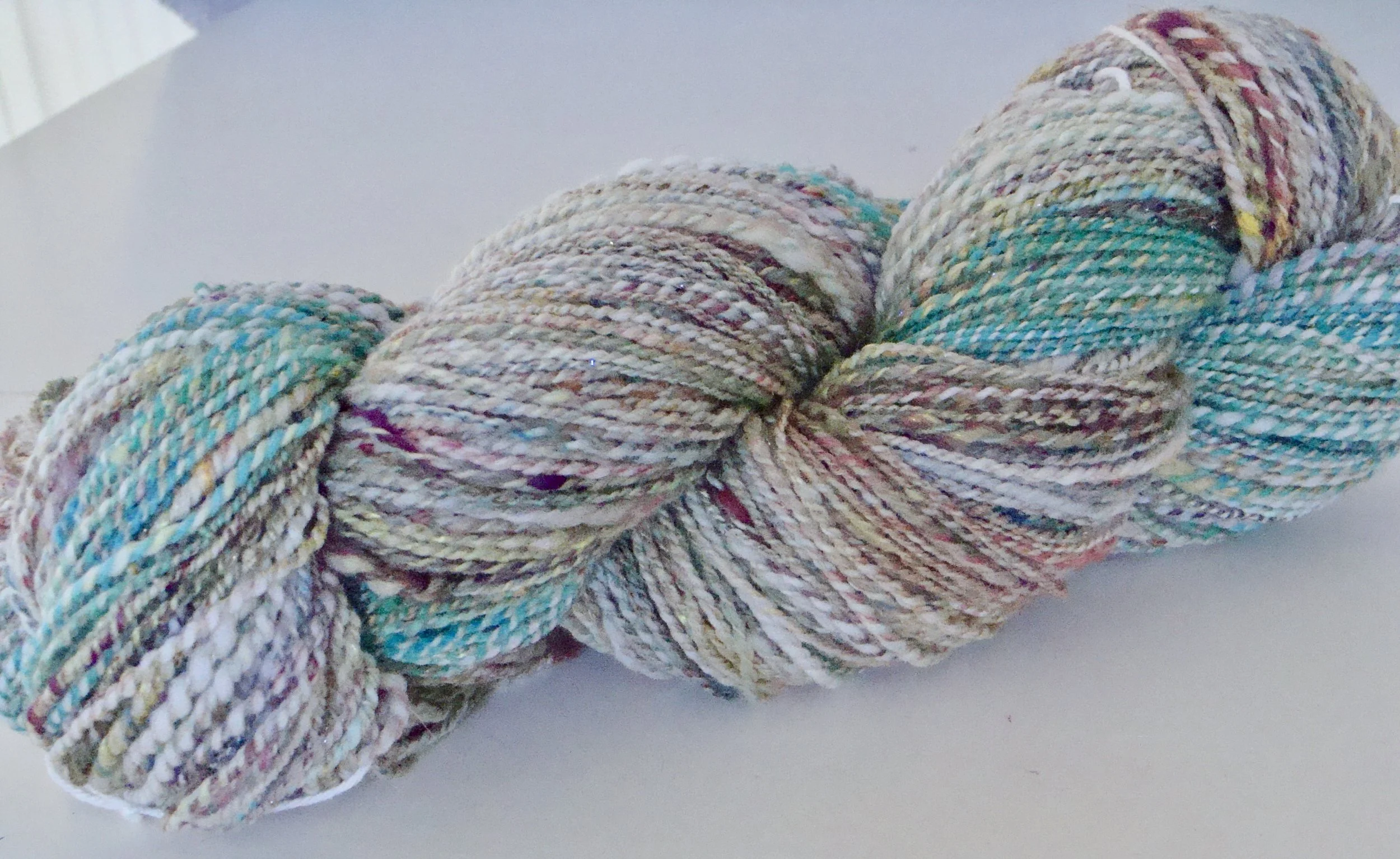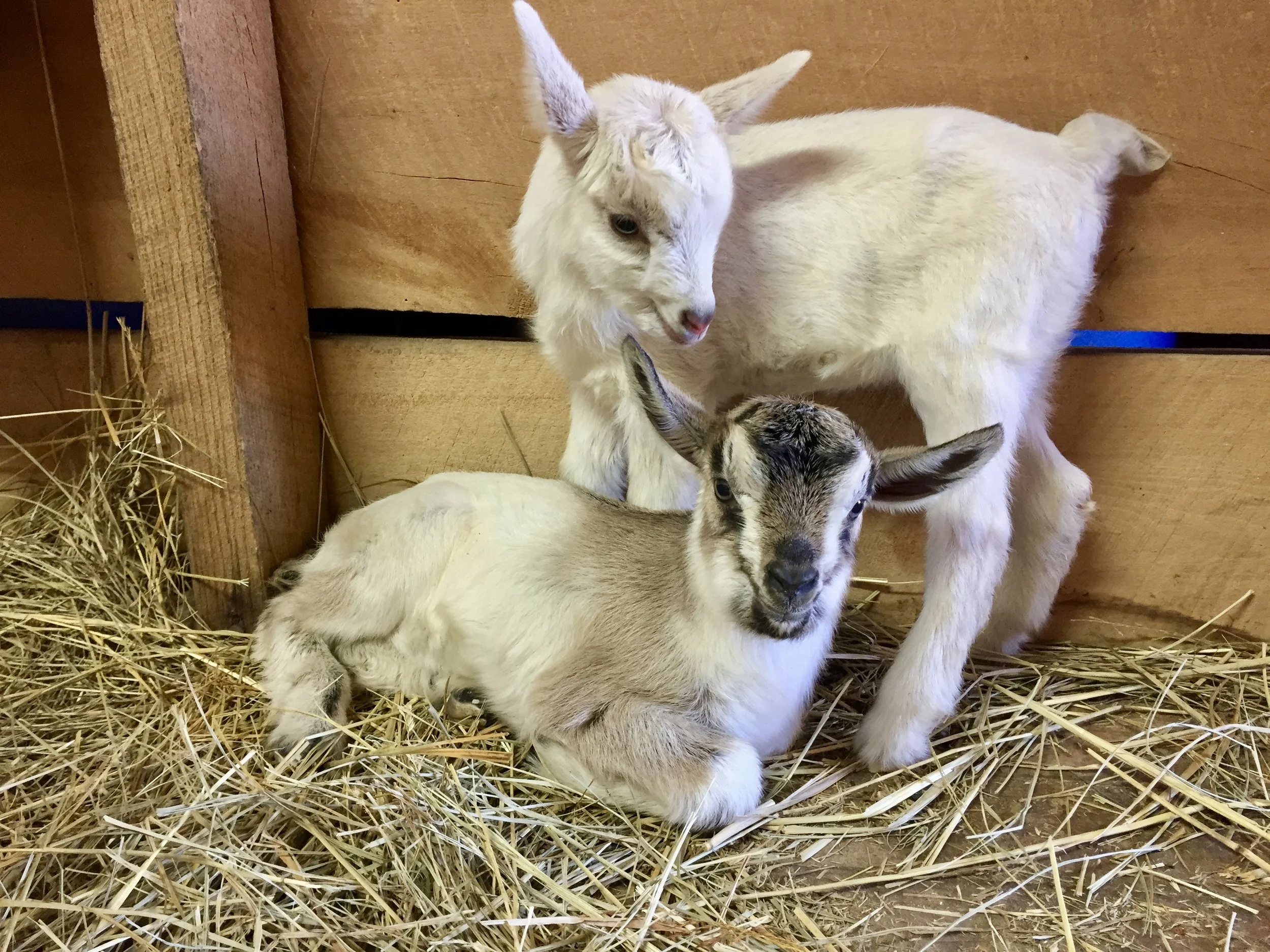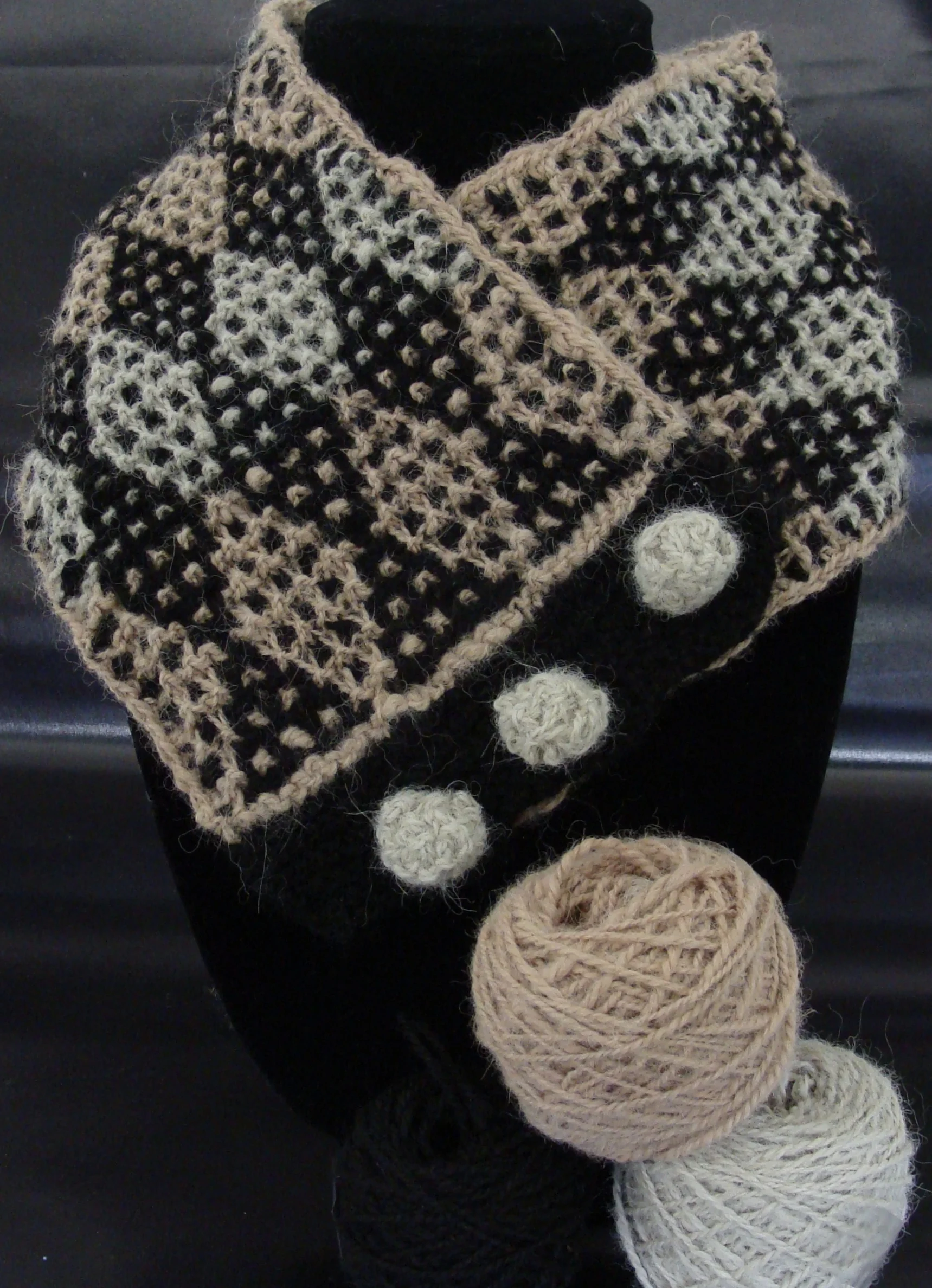Spinning Fairy Salad
So what is Fairy Salad you ask? A yarn I custom blended and then spun using 'Fairy Fibers' from a Phat Fiber Sampler box and the 'Salad Batt' carding techinque.
I thought I'd share my process of creating Fairy Salad in my hope to provide you with inspiration and, at the very least, a little colorful enjoyment. This is Post 1 of a 2 part series on Spinning Fairy Salad. Today I'll cover the fiber preparation and blending of the salad batt and the second post will be the actual spinning and final handspun yarn!
I have been following Grace Shalom Hopkins on YouTube. Grace is the host of Spin Weekly, a fun video series that she describes as "empower[ing] spinners like you to transform the fiber you love into the yarns you dream of". Grace is also the author of the SPIN Series of e-books which she sells in her Etsy shop. I recently purchased her CARD e-book which is full of drumcarding techniques and inspiration.
So that brings me to a Salad Batt. This is a technique Grace describes as "a batt that is made from many different small bits of fiber tossed together in a bowl - like a salad."
Batt-a type of fiber preparation for spinning that is carded using a drum carder, or a carding machine.
In creating my Fairy Salad batt, I used my largest mixing bowl and tore up fibers with a variety of textures and spring colors. There was some wool roving that acts more or less like the "salad greens", as well as the "salad garnishes" - mulberry silk, alpaca, rose fiber, bamboo, banana silk, Angelina, Stellina and Firestar for sparkle. To get this delicious mixture, I dove into a Phat Fiber Sampler box. The Phat Fiber Sampler box is a way for independent fiber, yarn and related needlecraft companies and artisans to promote their products through a goodie box that goes on sale once monthly. The January 2017 box theme was Fairies . . . hence the naming of my handspun "Fairy Salad".
To my salad mix I also added a little mulberry silk from my stash because of its beautiful citrusy lime shine. You can see some wisps of it on top of my 'salad' (photo above). The Fairy Salad mixture weighed 1.6 ounces. I also weighed out an equal amount of undyed merino wool top, giving me a total of 3.2 ounces of fiber. This amount was perfect because 3 oz. of fiber is a typical amount in a commercial skein of yarn and a decent amount for a small project.
loosening the merino top fibers before placing in drum carder
My "salad" had a lot of very fine and fluffy fibers and so in making a batt on the drum carder, they needed to be "sandwiched" between something to prevent them from flying away or sticking to the licker of the drum carder. This is where the merino top came in. I used the merino for the top and bottom layer of the carded batt to "sandwich" in the fairy salad mixture.
Licker-small drum that aligns and feeds fiber onto the larger drum of the carder.
A thin layer of merino top, enough to cover the drum, was laid down first. I use a Stauch Finest drumcarder. Most drumcarders hold between 2 to 4 ounces of fiber, mine probably being closer to 2 ounces. I ended up repeating the batt making process a total of three times. However, I probably could have got away with just two times. I used about 1/3 of my merino in each of the three batts; splitting that 1/3 between the top and bottom layers of the batt.
Next, I started adding handfuls of the "salad" fibers that I randomly pulled out of the mixing bowl. These had been torn into relatively small pieces, so I did not need to loosen them any further. Again, since I made three total batts, I used approximately 1/3 of the salad mixture per batt.
salad fibers on drumcarder
I finished with another layer of merino to top this fiber sandwich.
ouch . . . yes I stuck myself
**Time Out for Safety Tip**
Several years ago, I took a Fiber Preparation class from Robin Russo at the John C. Campbell Folk School. She emphasized the importance of promptly caring for any wounds or pricks acquired while using sharp fiber preparation tools such as carders and combs. She unfortunately learned this lesson when she developed a very serious infection of her finger from such an injury. So, hot water and soap wash, antibiotic ointment, bandaid!
I ran each batt through the drumcarder only once because I wanted to preserve more of the individual colors and textures. If you want a more thoroughly blended and smoother fiber, split the batt into pieces and re-card the fiber a second (or even third) time. Just be aware that this will also blend your colors more; something you may or may not want. I was concerned that with the many colors in this salad, additional blending would just turn into a muddy colored result.
After splitting the carded fibers and lifting an edge, I rolled off rolags (or technically fauxlags) directly from the drumcarder using two knitting needles. I ended up with 14 fauxlags from the three batts.
Rolag-a type of fiber preparation that is handcarded and the fiber is rolled into little tubes.
Fauxlag-Similar to a rolag but made from a drumcarded batt.
close-up of fauxlag
The German in me does not allow hardly anything to go to waste. So when I clean off the remaining fiber fuzzies from my drumcarder, they go into a bag of fiber remnants from other projects and will at some point be repurposed into another (ad)venture . . . future post.
So that brings us to the end of Part 1 of 'Spinning Fairy Salad'. The fauxlags are anxiously awaiting jumping on the spinning wheel! See you soon with Part 2!
Fairy Salad fauxlags



















